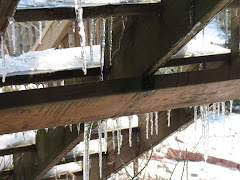




They keep their wings pretty much in motion, like hummingbirds, so I was quite pleased to get a few pictures that weren't blurry. There were two going after the self-seeded Nicotiana....funny, I had just been thinking I needed to pull it all out. The striped colors on its body are quite eye-catching.
See, DH, what you were missing by not taking the dogs out?? Lol.
For more information on these creatures, see here....
Update: Many thanks to Dr. Roger Downer who identified this moth for me as Pink Spotted Hawk Moth (who knew) and provided this link...
The website butterfliesandmoths.org is a wealth of information and where I sent in my request for identification which was most speedily answered.





















2 comments:
I think I had one of these at our Night Blooming Cereus on Thursday. I photographed one on the cereus flower 2-3 years ago, it was the same. Enjoyed these photos!!
Wow! Great photos! I would never have known their proboscis was so long!! :-)
Missing your posts.
Post a Comment